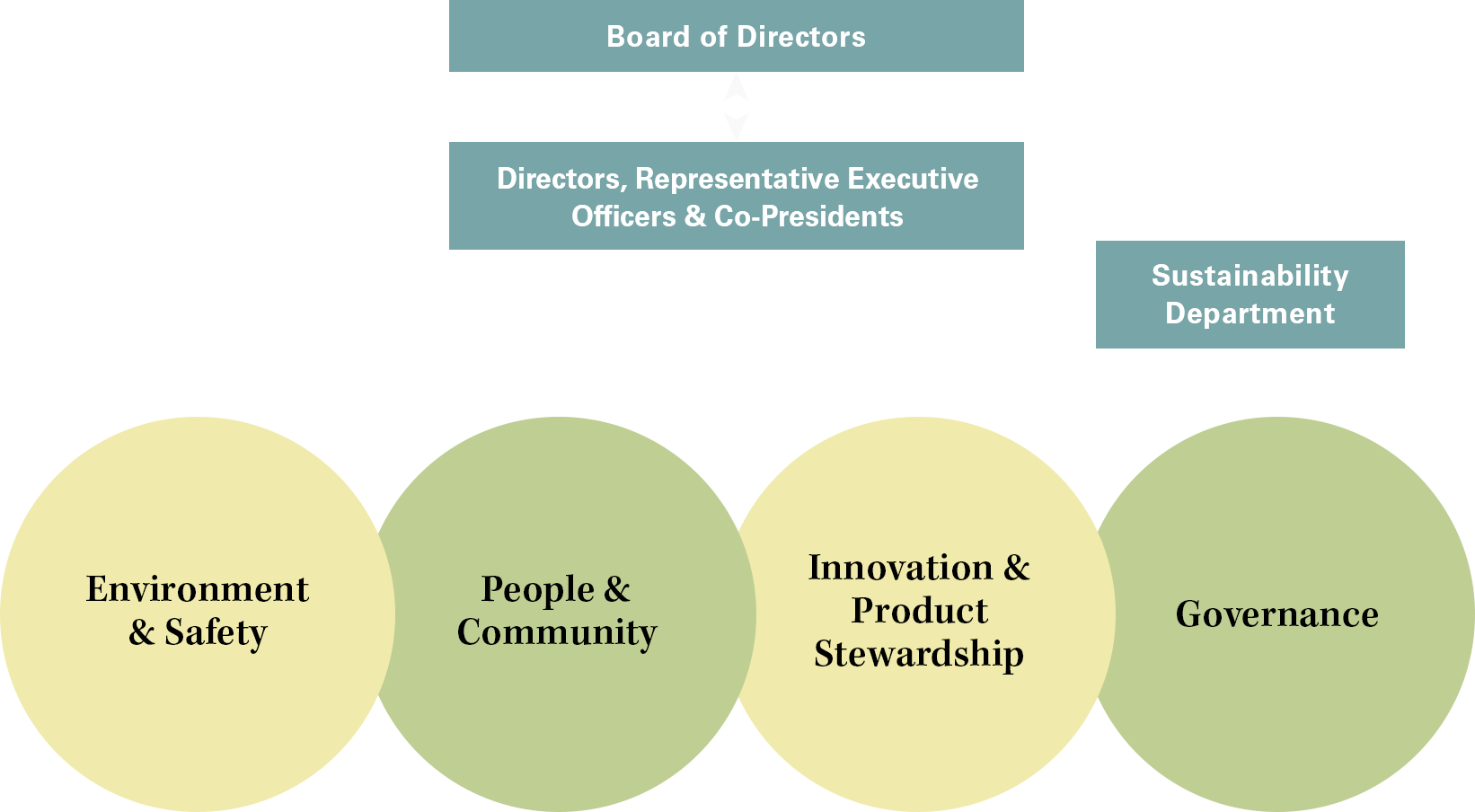Contributing to MSV with a sustainability strategy that has stronger links to business activities
Sustainability strategy linked to materiality
| Materiality (Related SDGs) | ESG agenda | ESG action examples | Contribution to MSV | |
|---|---|---|---|---|
| Environment & Safety |
Climate change
|
|
|
|
|
Resources and environment
|
|
|
||
|
Safe people and operations
|
|
|
||
| People & Community |
Diversity & Inclusion
|
|
|
|
|
Growth with communities
|
|
|
||
| Innovation & Product Stewardship |
Innovation for a sustainable future
|
|
|
ESG Statement
At Nippon Paint Holdings Group we aim to conduct our business activities to support and enable sustainable development everywhere we operate. We aim to include the three elements – economic, social and environmental– in a balanced and integrated manner.
Creating paints and coatings to add color, comfort, and safety to people everywhere has been our mission since the company was founded.
Finding solutions to global sustainability challenges is our responsibility to future generations and is a driving force for our continued growth and success. To achieve this, we will:
- Pursue technologies across the value chain to create sustainability benefits through innovative products and services, and new business opportunities.
- Engage and work with our stakeholders to meet their expectations and together deliver on our shared sustainability commitments, responsibilities, and challenges.
- Establish effective governance frameworks to ensure the transparency, objectivity, and fairness of the management of our company and earn society’s trust everywhere we operate.
- Respect, support, and enable our diverse employees and company associates to achieve their full potential and create innovative, sustainable value for all.
- Support the 2030 Agenda for Sustainable Development Goals (SDGs) through delivery of sustainability improvement plans that create new business opportunities and maximize shareholder value (MSV*).
* MSV is defined as maximizing shareholder value that remains after fulfilling our obligations to customers, suppliers, employees, and society.
Autonomous sustainability structure
Based on Asset Assembler model, we updated the sustainability structure in 2022 by shifting to an autonomous structure with a stronger link with business operations, away from the structure where the headquarters led our sustainability initiatives. Directly under the Directors, Representative Executive Officers & Co-Presidents, four materiality-based global teams have been formed for carrying out sustainability strategies on a Group-wide basis. By having team leaders directly report progress and proposals to the Co-Presidents, and the Co-Presidents, who further submit reports to the Board of Directors whenever necessary, sustainability activities are overseen by the Board of Directors.

| Global Team |
Environment & Safety | People & Community | Innovation & Product Stewardship | Governance |
|---|---|---|---|---|
| Scope |
|
|
|
|
| Global Team Leader |

Brad Hordern DuluxGroup Executive General Manager of DuluxGroup Supply Chain. Prior to joining this company, he was Group Manufacturing Manager for SCA Australasia, Logistics Director for Campbell’s Arnott’s Australia. |

Gladys Goh NIPSEA Group Senior Vice President of Strategic Innovation & Marketing, NIPSEA Group and Deputy President of Nippon Paint Marine Coatings. Prior to joining this company, she was in charge of marketing of Coca-Cola Malaysia as Group Brand Manager. |

Hong Jiang NIPSEA Group / NPCS Chief Technology Officer of Japan Group and NIPSEA Group. Prior to joining this company, he was in charge of technological development of automotive coatings as a technical director of Axalta Coating Systems (China). |

Yuri Inoue NPHD / NPCS Managing Executive Officer and GC of NPHD and Managing Corporate Officer of NPCS, Japan Group GC. Prior to joining NPHD, she was responsible mainly for legal affairs and internal controls as a Corporate Executive Officer of Showa Shell Sekiyu K.K. and Senior Executive Officer of Idemitsu Kosan Co., Ltd. |
Activities to determine KPIs
In addition to the risks and opportunities identified for each materiality, our Group formulates sustainability policies and strategies based on the characteristics of every region and market in which it operates as well as on the demands of stakeholders. KPIs are also selected as necessary in line with policies and strategies. Progress toward reaching the KPI targets is monitored.
With regard to climate change initiatives, KPIs are reviewed and established for each country and region to achieve the medium- to long-term net zero target. At the same time, best practices are shared with partner companies in Japan and overseas to formulate and implement action plans.
Environment & Safety KPI
| CO2 emission reduction (long-term target) |
CO2 emission reduction (interim target) |
Reduction of waste | Reduction of accidents at factories | |
|---|---|---|---|---|
| Japan | Net zero 2050 | 37% reduction by 2030 (compared to the 2019 level) | Waste discharge less than base year level (base years vary from partner companies) | Zero serious incidents |
| Asia | Net zero 2060 | 5% reduction every year through 2030 | 5% hazardous waste reduction (per ton) every year |
|
| Oceania | Net zero 2050 |
|
50% landfill waste reduction (per ton) by 2030 (compared to the 2020 level) |
|
| Americas (Dunn-Edwards) |
Net zero 2050 | Under consideration for setting targets | Under consideration for setting targets | To be identified once lead indicators identified |
Related Pages
Pages related to Sustainability Strategy
- Integrated Report 2022 (Digital Edition)

